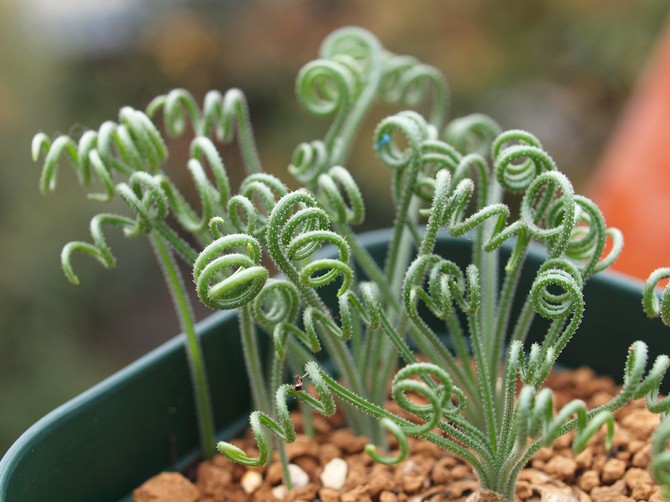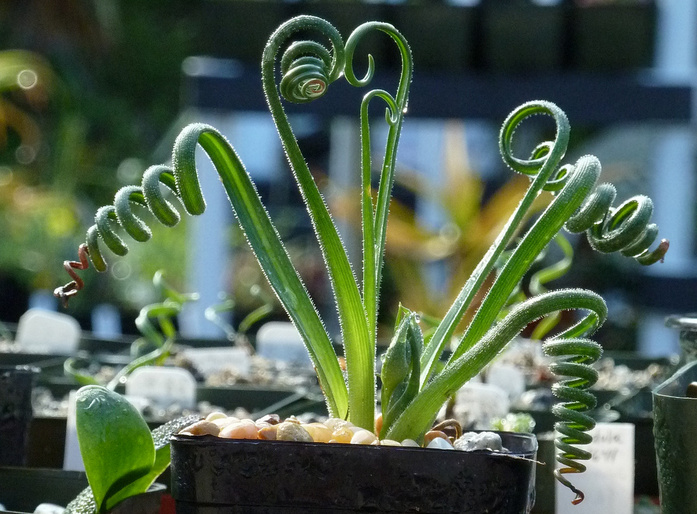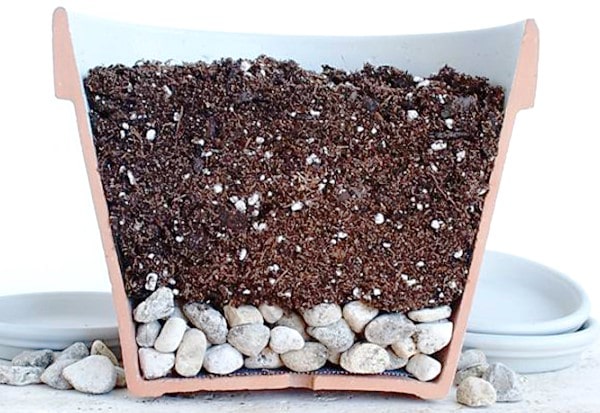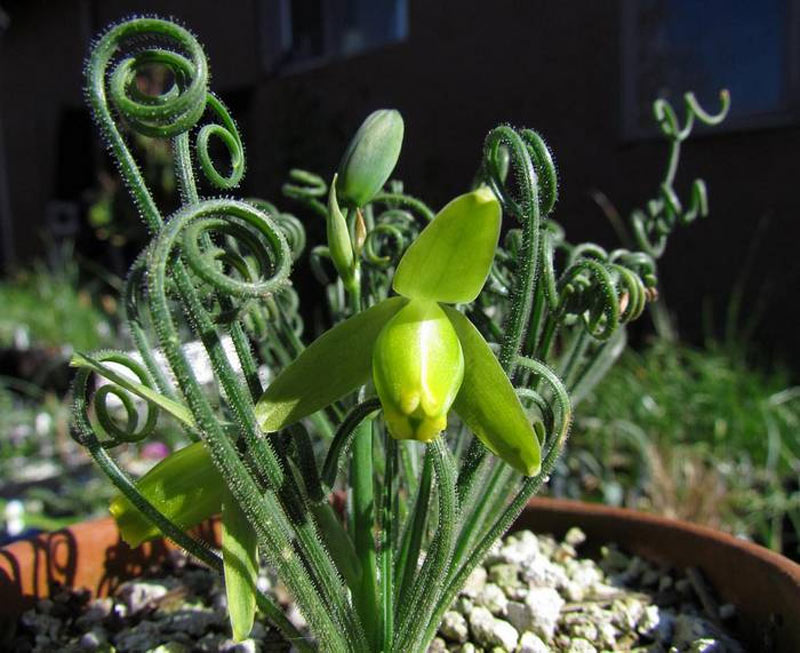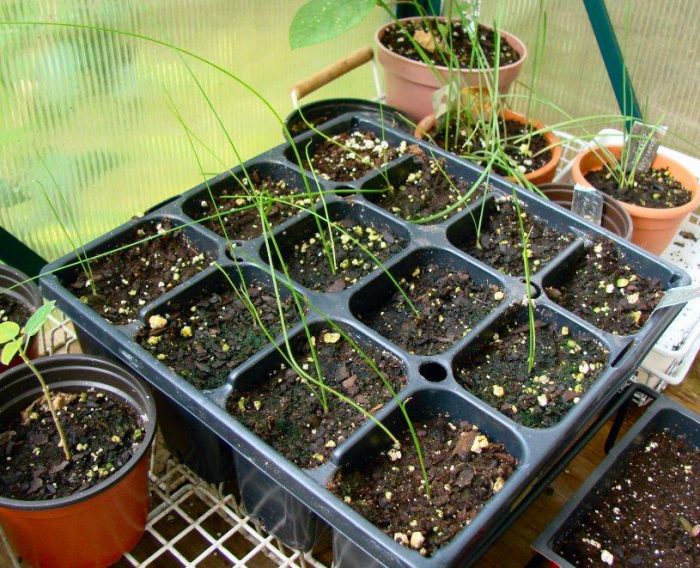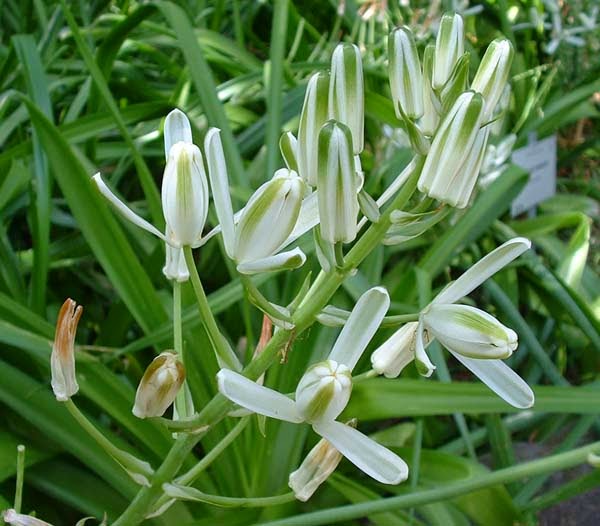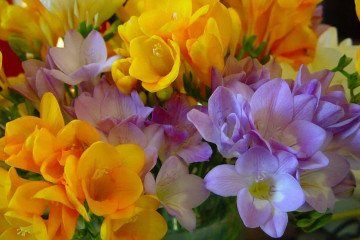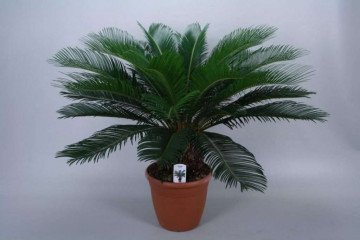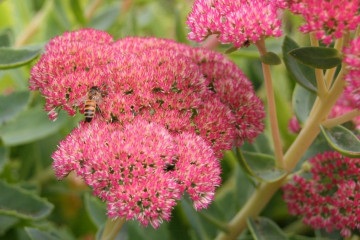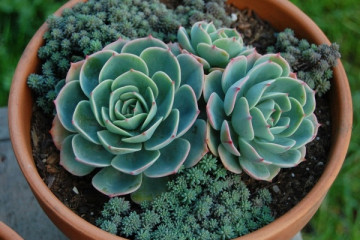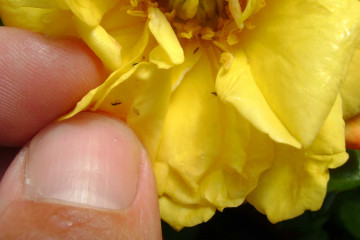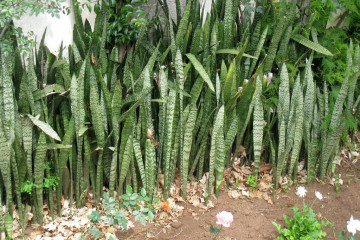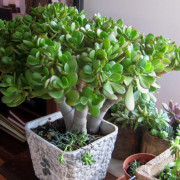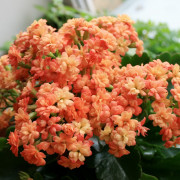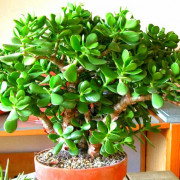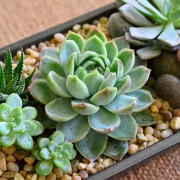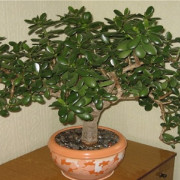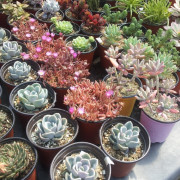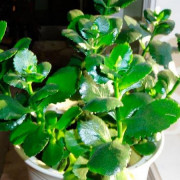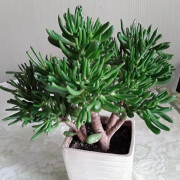Spiral albuka - cultivation and reproduction
Content:
Spiral albuka belongs to the Asparagus family. the culture grows in wildlife in South Africa. Its name is associated with the ability to throw out stalks with white flowers: “Albicare” in Latin means “shooting white”.
Growing and caring for spiral albuka at home
Albuca spiralis is a bulbous perennial succulent. The 5 cm bulb is white in color. The root system has a fibrous structure. 15-20 leaves up to 15 cm high grow from the root rosette. They are distinguished by a fleshy linear shape and a green-gray tint. The leaves are twisted in spirals, when fully straightened, they reach a length of 30-35 cm.
Albuka produces a tall, fleshy peduncle of a bluish hue, the height of which reaches 60 cm. 10-20 flowers with a diameter of up to 3 cm are formed on it, each of them is located on a small stem up to 4 cm high.After the flowers have faded, fruits appear in the form of a box, inside each are glossy black seeds.
Growing conditions for spiral albuka
Culture needs careful maintenance. Only under this condition will its structure be formed correctly, which will soon allow you to admire the unusual flowers.
Air temperature
Succulent grows well in warm temperatures. Optimum indicators for summer time are + 25… + 28 degrees, for winter time + 13… + 15 degrees.
Lighting
Albuka Spiralis needs a warm and light environment. For intensive growth and abundant flowering of the plant, it is required to leave it on the window sill through which a large amount of light enters.
How to water
The growth of a plant depends on its watering. Albuka needs to be watered abundantly, but not often. You need to wait until the top layer of the substrate dries up. It is recommended to reduce watering when the flower begins to prepare for the dormant period. At the same time, the leaves lie down and watering must be stopped altogether.
When to plant and is it possible to grow not at home
The heat-loving plant grows well in indoor conditions. But in a favorable climate, the flower can be planted in open ground. If the choice fell on a seed planting method, the plant should be planted in December. If you plant an albuka with a bulb, the optimal time for this is March.
Choosing a place for planting and preparing the soil
The albuca flower should be grown in light, loose soil, which is a ready-made substrate for crops such as cactus and other succulents. It is also allowed to independently prepare the soil. To do this, you need to mix earth, humus and sand in a 1: 1: 2 ratio.
To grow a healthy plant, you need to familiarize yourself with the soil requirements:
- Saturation of the substrate with a sufficient amount of minerals, contributing to comfortable growth.
- It is necessary to select a soil without excessive content of substances and organic elements that retain the liquid.
- It is necessary to maintain a low level of moisture on the roots of the plant, so that later after planting, diseases do not arise, the fragile skin of the flower does not crack.
- Perlite, coarse river sand, and fine gravel are welcomed in the soil.
- A quickly drying drainage medium is essential, according to florists.
- The optimal container for planting a flower is a clay pot with holes in the bottom. This material ensures proper gas exchange, timely evaporation of water, and improves the microclimate.
- A drainage layer should be placed on the bottom of the pot, making up 1/5 of the container. The presence of small bricks in the lower layer prevents root decay due to liquid stagnation.
- The soil should be neutral.
Transplant features
It is necessary to transplant the spiral albuka in the fall, care at home should be continued in the same way as it was before the transplant. At this time, the resting period of the plant ends. A light soil containing a large amount of sand is suitable for this event. The bottom of the pot should also be lined with a layer of drainage.
How does the flowering of a plant
The albuca spiralis plant begins to bloom from the moment the flowers open and continues until they begin to dry out.
Features of flowering and dormant period
Beginning in April, the spiral albuka blooms, which should be taken care of even more thoroughly at home.
Immediately after the end of the process, the plant should be stopped feeding and watering should be reduced until the leaves droop. Then you need to stop moistening the flower: it has a dormant period. For this period of time, florists recommend leaving the pot with the bulb in a room with a room temperature regime.
In the second half of autumn, house plants should be transplanted into a new soil with an enriched composition and watering should be resumed. Albuka should be left in a lighted place and looked after until the next flowering.
Reproduction methods
For reproduction of a flower, it is worth using a seed or children in the form of onions.
Seed propagation
Albuca from seeds is a fairly often used type of reproduction. To do this, you need to complete the following step-by-step instructions:
- At the first stage, a special soil should be prepared.
- Plant seeds in it.
- Cover the container on top with foil or glass.
- Place the pot on a well-lit windowsill. Pi it is important to observe the temperature regime in the region of + 26 ... + 28 degrees.
- The greenhouse should be periodically humidified and ventilated.
- The first seedlings appear 14 days after planting.
The plant first releases straight leaves, after 3-5 months they curl. The first flowers of the albuka can be seen in the third year of the culture's life.
Reproduction by baby bulbs
Vegetative propagation by baby bulbs is carried out after they are separated from the mother bulb. They need to be transplanted into a different soil in the autumn.Each sprout should be planted in a separate small pot with a diameter of up to 8 cm. This propagation method allows the flower to preserve the valuable characteristics of the variety, such as the color of the flowers and their aroma, the curl of the leaves.
Leaves do not curl
Spiral albuka is an unusual plant, recognizable by the original twisted leaves, which sometimes do not reach the desired shape due to a lack of light or stagnation of moisture in the ground.
How to twist the spirals
To please others who admire the plant, you need to decide on the right lighting. To do this, place a pot of albuka on a sunny windowsill. In the absence of such an opportunity, it is necessary to use a phytolamp. Dryness of the soil is eliminated by moderate moisture.
Diseases and pests
An albuca growing in a house does not often carry diseases. However, sometimes the plant has such fungal ailments:
- Gray rot or botrytis. Implies covering the bulb with a grayish bloom.
- Fusarium. From it, the plant begins to darken from the bottom. Then the bulb is gradually damaged and then the leaves turn yellow.
- Root rot. If not properly cared for, the bulb will become soft and rot.
Other popular varieties of albuca flower
Some types of albuca also deserve attention:
- Bracts. Reaches a height of 120 cm, the flowering period falls in May-August, needs nutritious soil.
- Canadian. It blooms with white and yellowish flowers in summer.
- Albuca Nelson. The plant grows in soil with a drainage layer, blooms in the warm season.
True connoisseurs of flora will love the albuca with emerald spirals of foliage and a delicate scent of flowers. In order not to ruin the culture, it is worth paying attention to the peculiarities of caring for the plant.

